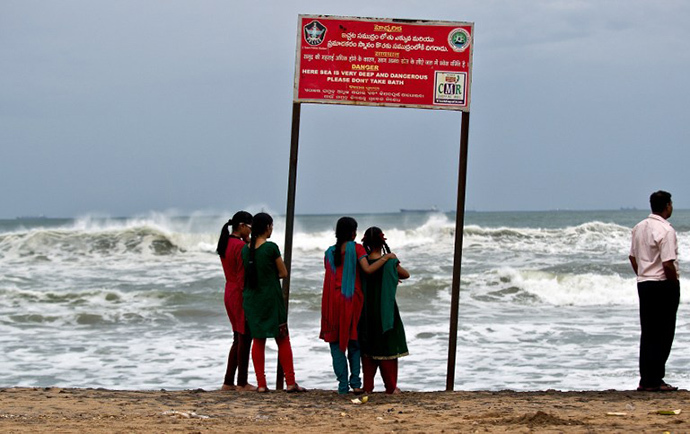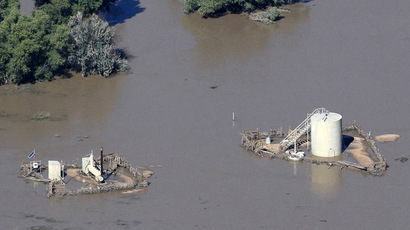'Red alert': Monster cyclone hits Indian coast, sends 550,000 fleeing

As one of the largest cyclones in India’s history has reached its eastern coast, prompting a national red alert and sending some 550,000 people scurrying for shelter, the first deaths have been reported.
Five people were killed in Odisha when trees uprooted by wind gusts fell on them, local media cited police officials as saying.

Wind speed up to 200 kilometers per hour in gusts, local
officials say, according to AFP.
Cyclone Phailin is likely to be the strongest to hit India since 1999, when a deadly Orissa cyclone killed 10,000 people and caused $4.5 billion worth of damage. This cyclone may surpass that one, as it gathers strength over the warm water of the Bay of Bengal on its way toward land.
Heavy rain and strong winds of up to 220 kilometers per hour were
already lashing the country’s eastern coast on Saturday morning
as the cyclone approached. Television footage showed gusts of
wind snapping branches from trees and residents of coastal
villages flocking to shelters.
HT @NDTV Over 550,000 evacuated, "many refused to move, had to be convinced" in Odisha and Andhra Pradesh states. #Phailin
— Hurricane Central (@twc_hurricane) October 12, 2013
"This is one of the largest evacuations undertaken in
India," said Shashidhar Reddy, vice chairman of the National
Disaster Management Authority. "We will be on a war
footing."
"We've been instructed by the government to use force in case
people resist," Pradipta Mohapatra, Orissa
state special relief commissioner, told AFP.
Paradip, a major port in Odisha, Andhra Pradesh, was closed and vessels ordered to sail to the open sea in the wake of the storm. Among them is an oil tanker holding about 2 million barrels of crude.
The US Navy's weather service estimated the wind at sea was gusting at 314 kilometers per hour, with some forecasters comparing the cyclone to Hurricane Katrina, which devastated New Orleans in 2005.

As of morning, Phailin was filling most of the Bay of Bengal, satellite images showed. Once it hits the coast in the evening, it may trigger a 3.4-meter surge of sea levels, the India Meteorological Department said in a statement.
"The storm has high damage potential, considering windspeed," Lakshman Singh Rathore, head of the weather department, said Friday.
Indian authorities warned of extensive damage to crops, older
buildings and the power grid, as well as possible disruption of
rail services.
















